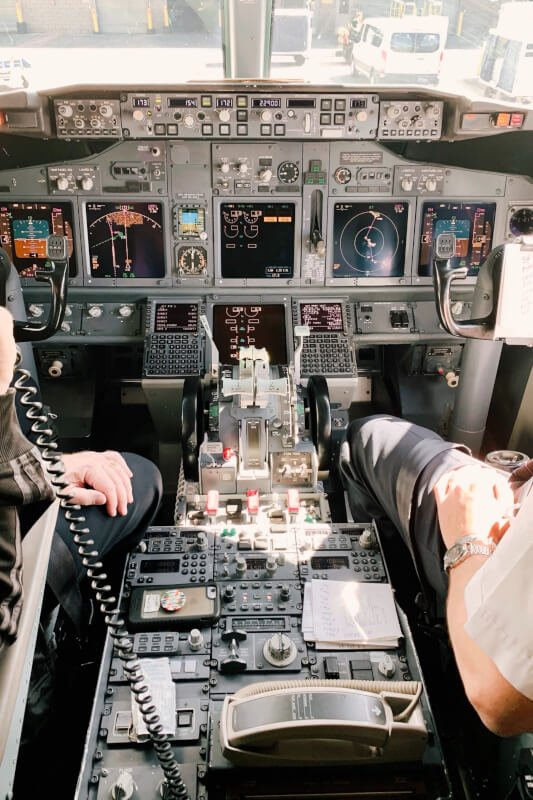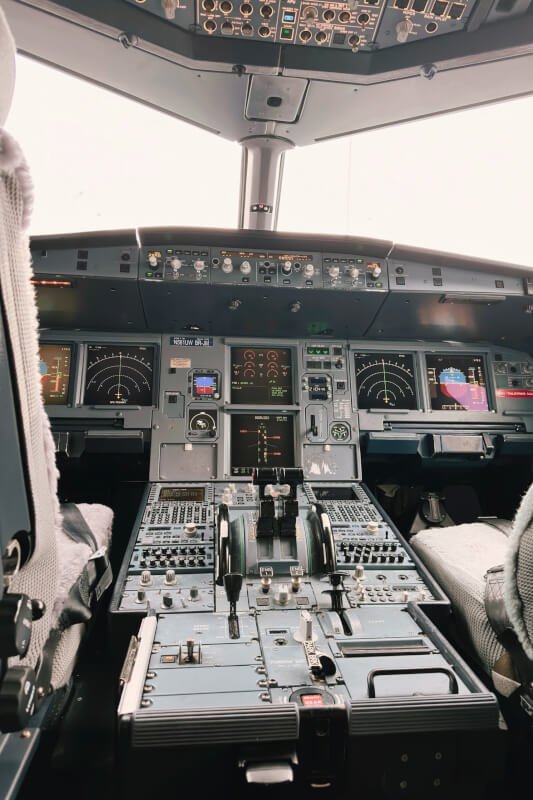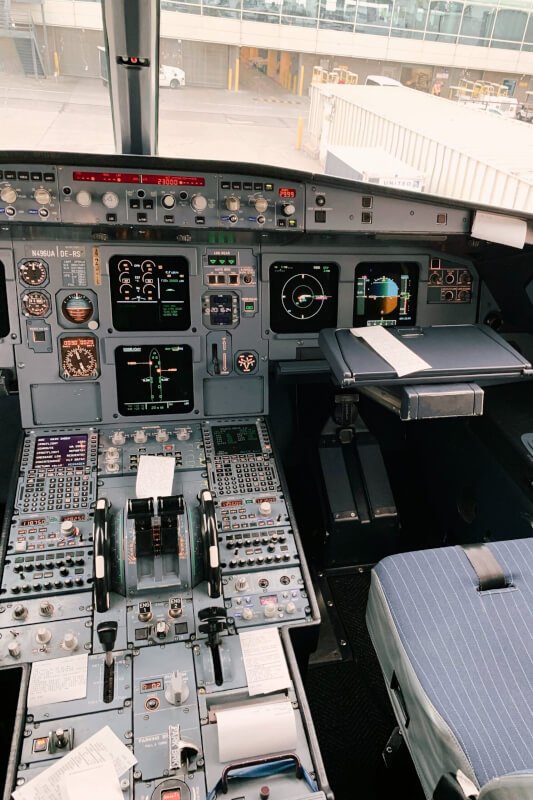So, you’ve taken your RC aircraft out for a spin and suddenly find yourself in a situation where you need to perform an emergency landing. Don’t panic! In this article, we will guide you through the steps to ensure a safe emergency landing with your precious RC aircraft. Whether you’re a beginner or a seasoned pilot, these tips and techniques will help you handle unexpected situations with confidence and skill. So, let’s delve into the world of emergency landings and equip you with the knowledge you need to safely navigate the skies!

Assessing the Situation
Evaluate the Problem
When faced with a situation that calls for an emergency landing with your RC aircraft, it is crucial to remain calm and assess the problem at hand. Determine the nature of the issue, whether it be engine failure, control malfunction, or any other potential problem. By evaluating the problem, you can better understand the necessary actions to take during the emergency landing.
Check for Available Landing Areas
Once you have evaluated the problem, it is time to scan the surrounding area for potential landing sites. Look for clear and open spaces that can accommodate your RC aircraft’s needs. Keep in mind that the landing area should be free of obstacles such as trees, buildings, or bodies of water. This step is crucial as it allows you to identify suitable locations for a safe emergency landing.
Alerting Others
Notify Nearby Individuals
When you find yourself in a situation where an emergency landing is required, notifying nearby individuals is essential. Alert anyone in the vicinity of your intentions to perform an emergency landing. Whether you are at a designated RC airfield or a public space, it is important to ensure the safety of others by providing them with a warning. Clear communication will help prevent any potential accidents or collisions.
Inform Air Traffic Control (ATC)
If you are flying your RC aircraft in an area that is controlled by air traffic control (ATC), it is vital to inform them of the emergency landing situation. Contact the nearest ATC facility and provide them with a concise overview of the problem you are experiencing and your intended course of action. By notifying ATC, you can ensure a coordinated response and potentially receive valuable guidance during the emergency landing.

Activate Emergency Landing Mode
Switch to Manual Control
Once you have evaluated the problem and alerted others, it is time to activate the emergency landing mode on your RC aircraft. This entails switching from any automated flight modes to manual control. By assuming direct control of your RC aircraft, you can have more precise control over the descent and landing process, increasing your chances of a successful emergency landing.
Disable Autopilot Features
In addition to switching to manual control, it is crucial to disable any autopilot features on your RC aircraft. Autopilot functions, such as waypoint navigation or return-to-home capabilities, may not be suitable for emergency landings. Disable these features to prevent any potential interference during the landing process. It is important to maintain full control of the aircraft throughout the emergency landing.
Executing the Emergency Landing
Maintain Control and Stability
During the execution of an emergency landing, it is vital to maintain control and stability of your RC aircraft. A calm and steady hand is key to ensuring a safe descent. Avoid making abrupt movements or overcorrecting, as this can destabilize the aircraft and hinder a successful landing. By maintaining control and stability, you increase the likelihood of a safe emergency landing.
Reduce Altitude Gradually
As you approach the designated landing area, it is important to gradually reduce the altitude of your RC aircraft. Descend slowly to allow for a smooth and controlled landing. Rapid descent can lead to loss of control or potential damage to the aircraft upon impact. By reducing altitude gradually, you provide yourself with ample time to assess the landing area and make any necessary adjustments during the landing process.

Selecting a Landing Area
Assess Terrain and Obstacles
Before finalizing your choice of landing area, it is crucial to assess the terrain and identify any potential obstacles. The landing area should be devoid of any uneven surfaces, rocks, or other hazards that may damage your RC aircraft during landing. By carefully assessing the terrain, you can select a suitable location that minimizes the risk of damage to your aircraft and increases the chances of a successful emergency landing.
Consider Wind Direction
In addition to evaluating the terrain, it is important to consider the wind direction when selecting a landing area. A strong crosswind can significantly impact your ability to maintain control during touchdown. Aim to land into the wind to maximize control and minimize the groundspeed of your RC aircraft. By taking wind direction into account, you can enhance your chances of a safe and controlled landing.
Approaching the Landing Area
Plan Descent Path
As you approach the designated landing area, it is essential to plan your descent path. Consider any obstacles that may be in your flight path and adjust your approach accordingly. Aim to maintain a consistent glide slope, ensuring a controlled and smooth descent. By planning your descent path, you can ensure a safe approach to the landing area and minimize the risk of collision with any obstacles.
Manage Airspeed
Managing the airspeed of your RC aircraft is crucial during the approach to the landing area. Adjust the throttle accordingly to maintain a steady and controlled descent speed. Too fast of an approach can result in a hard landing or overshooting the intended landing area, while too slow of an approach may cause the aircraft to stall. By managing the airspeed, you can maintain control and achieve a successful emergency landing.
Touchdown and Rollout
Flare for a Gentle Touchdown
During the final moments of the emergency landing, it is crucial to execute a flare maneuver to achieve a gentle touchdown. As you approach the ground, gradually reduce the descent rate by slightly pulling back on the control stick. This flare maneuver helps soften the impact and prevents damage to the RC aircraft upon touchdown. By executing a gentle touchdown, you increase the likelihood of a successful emergency landing.
Apply Brakes if Applicable
If your RC aircraft is equipped with braking capabilities, applying the brakes upon touchdown can further enhance your control and reduce the distance required for rollout. However, it is important to exercise caution when applying the brakes to avoid any abrupt stops or potential damage to the aircraft. Utilize braking in a controlled manner to safely slow down your RC aircraft during the rollout phase.
Maintaining Situational Awareness
Monitor Battery Levels
Throughout the emergency landing process, it is important to monitor the battery levels of your RC aircraft. Low battery levels can lead to a loss of power and potential control issues. Keep a close eye on the battery indicator and plan your landing accordingly. If the battery level reaches a critical point, prioritize landing as soon as possible to avoid an unplanned crash due to power loss.
Stay Alert to Surroundings
Maintaining situational awareness is crucial during an emergency landing. Continuously scan your surroundings for any potential hazards or changes in the environment that may affect your landing. Stay alert to any vehicles, pedestrians, or other aircraft in the vicinity that may pose a risk. By staying aware of your surroundings, you can anticipate and respond to any unexpected challenges during the emergency landing process.
Post-Landing Assessment
Inspect Aircraft for Damage
After successfully executing an emergency landing, it is important to inspect your RC aircraft for any damage sustained during the landing process. Check for any visible cracks, dents, or other signs of damage. Assess the functionality of the aircraft’s components, such as the control surfaces and power system. By conducting a post-landing assessment, you can identify any necessary repairs or maintenance needed before the next flight.
Evaluate Lessons Learned
Every emergency landing presents an opportunity for learning and improvement. Take the time to evaluate the lessons learned from the experience. Reflect on the actions taken and assess their effectiveness. Consider what could have been done differently or better. By engaging in this evaluation process, you can enhance your skills and knowledge, ensuring a safer and more prepared approach to future emergency situations.
Emergency Landing Training and Preparation
Practice Emergency Procedures
To be well-prepared for an emergency landing with your RC aircraft, it is essential to practice emergency procedures beforehand. Set aside dedicated time for training sessions focused on emergency scenarios. Practice switching to manual control, disabling autopilot features, and executing smooth and controlled landings. By regularly practicing emergency procedures, you can develop the necessary skills and muscle memory to perform a safe emergency landing.
Carry Essential Tools and Spare Parts
As part of your emergency landing preparation, ensure that you carry essential tools and spare parts that may be needed during an emergency. This includes items such as screwdrivers, spare propellers, batteries, and other components specific to your RC aircraft model. By having these items readily available, you can address minor issues or perform quick repairs in the field, increasing the chances of a successful emergency landing.
Performing a safe emergency landing with your RC aircraft requires a calm and methodical approach. By following the outlined steps and continuously improving your skills through practice and preparation, you can increase your confidence and ability to handle unexpected situations. Remember, safety should always be the top priority, both for yourself and those around you.


